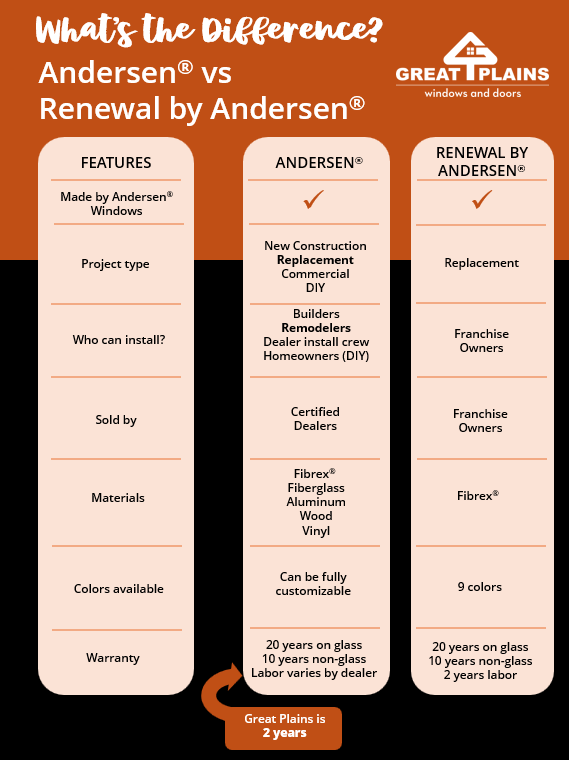Understanding the Difference between Andersen Windows and Renewal by Andersen
When Twin Cities homeowners explore options for new windows, they often inquire about the differences between Andersen and Renewal by Andersen. This article aims to clarify these distinctions and highlight the similarities.
Company and Manufacturing Origins
Both Andersen and Renewal by Andersen are branches of Andersen Corporation. Andersen Windows are manufactured in many locations across the country, primarily in Bayport, MN where they’ve been for more than 100 years. Renewal by Andersen was created in the 1990’s as a division of Andersen utilizing a single line of windows made from Andersen’s composite framing material called Fibrex®. They are manufactured largely in their Cottage Grove, MN window manufacturing plant.
Project Types for Each Line of Windows
Andersen windows are versatile, fitting a variety of project types including:
- New construction homes
- Residential window replacement
- Commercial projects
- Historic preservation
- DIY
In contrast, Renewal by Andersen specializes solely in replacement windows, which must be installed by a certified Renewal by Andersen team. This limits their use to replacement projects and excludes new constructions or installations by independent contractors or DIYers.
Product Range and Options
Andersen offers a broad selection of windows across five series:
- 100-series
- 200-series
- 400-series
- A-series
- E-series
These series include options for both full-frame and replacement windows, catering to diverse homeowner needs. See our article about the differences between Andersen Windows Series for more information.
Renewal by Andersen, however, offers only one line of windows now called Acclaim.
Color and Customization
Color choice is crucial for enhancing home aesthetics and curb appeal. Renewal by Andersen provides nine exterior and interior color options. Andersen’s color options vary by series, with the E-series offering up to 50 standard exterior colors and possibilities for custom combinations and anodized finishes.
Framing Materials
Andersen offers a variety of exterior sash and frame construction including:
- Permashield vinyl cladding
- Aluminum cladding
- Fiberglass
- Fibrex® Composite
Both brands utilize Fibrex®, a proprietary composite material made from reclaimed wood fiber and thermoplastic polymer, known for its durability and resistance to temperature extremes and fading. While Andersen incorporates Fibrex® in several series, Renewal by Andersen uses it as the only frame and sash material.
Cost Considerations
The cost comparison between the two brands can vary significantly based on specific needs. However, the Andersen 400-series Woodwright windows are most comparable to Renewal by Andersen’s offering, with similar materials and designs. In contrast to Renewal by Andersen’s one line of windows, Andersen’s complete line-up offers flexibility in cost and function.
Sales Approach
Renewal by Andersen windows are sold exclusively through franchised dealers, who often have a process-driven in-home sales presentations. Andersen windows, however, are available through various certified dealers, including major retailers like Home Depot and smaller, local businesses like Great Plains Windows. Andersen window dealers can create whatever sales experience they like including a hassle-free, no-pressure, just-what-you-need sales approach like we provide through our window and door experts.
Warranty Information
Both Andersen and Renewal by Andersen offer a 20-year warranty on glass and a 10-year warranty on non-glass components. However, Renewal by Andersen provides a 2-year warranty on installation through their franchises, while installation warranties from Andersen dealers may vary.
For our customers, Great Plains Windows provides a 2-year labor warranty on any installed product, offering additional peace of mind through 8 complete seasons.
This comprehensive comparison should help you make an informed decision about which window brand is right for your home improvement project. For a visual summary of these differences, see our comparison chart below.

